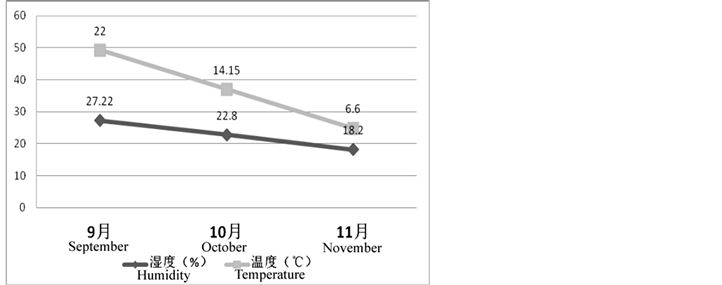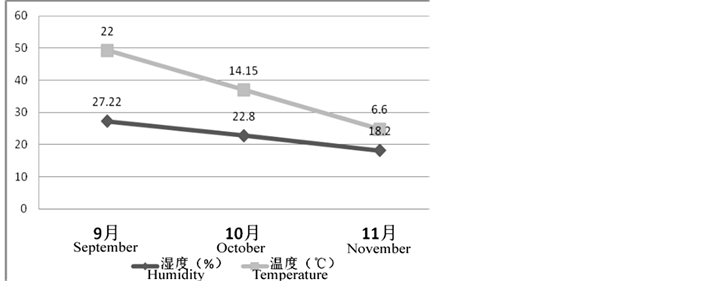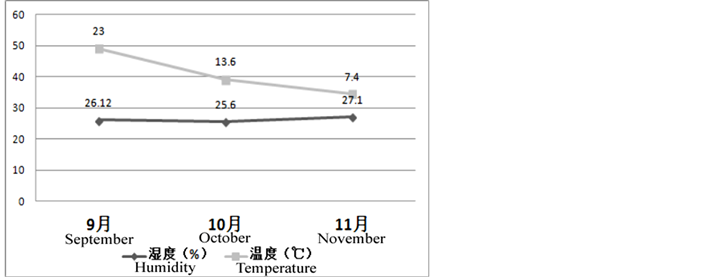摘要:
根际微生物的活动在植物的根际营养中起着分解有机物、释放与贮蓄养分的积极作用。根际促生微生物可以通过影响植物根系形态及生理特征而影响植物对养分的吸收,根际生防微生物通过产生一些抗菌物质抑制病原菌在植物根际的生殖和发展。然而,由于土壤中微生物个体微小,数量多,分离和鉴定困难,土壤环境条件复杂等原因,限制了人们对根际微生物与植被相互关系的认知。因此,本研究选择五种具有代表性的植物,在不同季节取其根际土中的微生物置于酵母膏,琼脂,PDA,高氏一号四种培养基培养,运用菌落计数研究了同种植物微生物量随季节变化的规律及不同植物微生物类群结构的异同,试图解释根际微生物数量和结构与植被和季节的相互关系。
Abstract:
Rhizosphere microorganisms play an active role in the storage and release of nutrients and the decomposition of organic matter in the rhizosphere of plants. Rhizosphere microorganisms can affect plant growth and nutrient uptake by affecting the morphology and physiological characte-ristics of plant roots, and anti-microbial particles produced by some rhizosphere microorganisms can also inhibit the reproductive development of some pathogen in plant rhizospheres. However, soil microorganisms are small, large in number, difficult in isolation and identification, and complicated in soil environment conditions, which restrict the understanding of the relationship between rhizosphere microorganisms and vegetation. Therefore, in this study, five representative plants were selected and the rhizosphere soil extracts were cultivated into four different mediums, including yeast extract, pure agar, PDA, and Gause’s No.1 medium. Then, seasonal changes of biomass in each particular plant were studied by colony counting, and the similarities and differences between different plants’ microbial community structures were analyzed, trying to explain the correlation between rhizosphere microorganism number, community structure and plant types as well as environmental factors.
1. 引言
土壤微生物是生态系统的分解者,主要包括细菌、真菌、放线菌以及原生动物和藻类等 [1] ,它积极参与生态系统中物质循环和能量流动,是维持生态系统结构与功能的重要因素。据估计,土壤有机质的一半是微生物生物量 [2] ,土壤微生物在土壤形成、生态系统的生物地球化学循环、污染物质的降解和维持地下水质量等方面都具有重要作用。由于土壤中微生物个体微小,数量多,土壤微生物分离和鉴定困难,土壤环境条件复杂等原因,目前为止大约仅1%~10%的土壤微生物被分离和鉴定,这些因素限制了对土壤微生物在陆地生态系统中重要作用的认识 [3] 。
土壤微生物作为土壤重要的组成部分,在土壤的生物化学循环中起着重要的作用,且对外界环境变化反应敏感,能够灵敏的指示土壤质量和生态系统的健康和稳定性。本研究从空间分布和季节动态两个方面,对土壤微生物群落分布格局进行调查和实验分析,试图揭示土壤微生物群落的时空分布变化规律和植被与季节的关系,对于进一步了解陆地生态系统的结构和功能,防治外来物种入侵具有重要的意义。
1.1. 土壤微生物季节变化
土壤微生物生物量的季节动态是土壤微生物对周围环境因子季节性变化的一种响应,更是土壤微生物与植被(特别是树木)进行养分竞争的体现。土壤微生物随季节的变化是明显的,在生态系统中,季节变化带来土壤微生物的生态环境变化,并通过土壤温度、湿度、有机物的供应和植物生长状况等因素的综合作用影响微生物。土壤微生物活性通常在夏天比较高而存冬天比较低。冬季土温低或者土壤处于冰冻状态,微生物数量低,春季随气温升高,土壤解冻,微生物数量明显上升,秋季,由于气温较合适和有机残体的不断输入,微生物的数量得到大幅度增长 [4] 。早春和收获时栽种作物的土壤中脂肪酸甲酯特征明显与土壤质地、阳离子交换容量和碳含量有关 [5] 。此外,土壤微生物的季节性变化还受到干湿条件的影响 [6] 。
1.2. 植被对土壤微生物的影响
植被是土壤生物赖以生存的有机营养物和能源的重要来源,此外活的植被影响土壤生物定居的物理环境,包括影响植物凋落物的类型和堆积深度、减少水分从土壤表面的损失率等 [7] 。与裸露地相比,植被覆盖下土壤微牛物牛物量碳显著高于裸露地且随着恢复年限的增长差异越来越大 [3] 。另外,植被的生长可以通过根系及其分泌物为微生物提供更为丰富的生长基质和有利的生长环境,不同植物根分泌物能够对土壤微生物种类、微生物区系及其生理特性产生影响 [8] 。
1.3. 土壤微生物对植被的作用
土壤微生物尤其是根际微生物的活动在植物的根际营养中起着分解有机物、释放与贮蓄养分的积极作用。根际微生物被认为是土壤微生物的子系统,影响着植物生殖、生长和群落演替。有些植物根际促生微生物可以通过影响植物根系形态及生理特征,如增加植物根系吸收面积、改变植物根系通透性从而影响植物对N,P,K的吸收。根际生防微生物颗粒通过产生一些抗菌物质抑制病原菌再植物根际生殖和发展,同时也能够诱导植物系统对病原菌和外界不良条件产生一定抗性,从而间接促进植物生长 [9] 。
2. 研究内容与方法
2.1. 样品采集
样品分别从南京师范大学附属中学(E118.778, N32.081)选取雪松(Cedrus deodara (Roxb.) G.Don.),锦葵(Malva sinensis Cavan.),夹竹桃(Nerium indicum Mill.),杜鹃(Rhododendron simsii Planch.),麦冬(Ophiopogon japonicus (Linn. f.) Ker-Gawl.) 五种植物研究其根际微生物的时空分布。分别将采集上述前四种植物地下10 cm左右的活的侧根,切断后除去表层土壤,再轻轻抖落其上附着不紧密的外围土,用毛刷轻轻刷粘附在根表面的土壤作为根际土,放入无菌封口袋密封,放入冰盒内带回实验室。
将一定株数的麦冬(Ophiopogon japonicus (Linn. f.) Ker-Gawl.)连根拔起,除去表层土壤,再轻轻抖落其上附着不紧密的外围土,用毛刷轻轻刷粘附在根表面的土壤作为根际土,放入无菌封口袋密封,放入冰盒内带回实验室。
采样于2016年9月,10月,11月分三次进行;由于土壤采样条件等因素,麦冬的部分数据由于采样困难,误差较大而未给出。
2.2. 根际土壤理化指标测定
使用美国LabQuest® 2 Vernier传感器,分别获取根际土壤样本的温度、pH值、相对湿度,土壤的元素含量分析送至南大现代分析中心测定。
2.3. 根际微生物的培养
取样间隔为一个月,每次取样后将每个土样分为两份,一份放入4度冰箱保存,另一份分别取10 g加入100 ml蒸馏水中,摇床震荡20 min,再稀释为10-3和10-4的浓度梯度,接种于真菌培养基(PDA培养基:马铃薯200 g,葡萄糖20 g,Agar 20 g加入1000 ml蒸馏水 自然pH),放线菌培养基(高氏一号培养基:可溶性淀粉 20 g,KNO3 1 g,K2HPO4 0.5 g,MgSO4∙7H2O 0.5 g,NaCl 0.5 g,FeSO4∙7H2O 0.01 g Agar 20 g加入1000 ml蒸馏水pH = 7.4~7.6),高营养细菌培养基(酵母膏培养基:KH2PO4 1 g,蛋白胨2 g,酵母膏1 g NaCl 0.5 g MgSO4∙7H2O 0.5 g,Agar 20 g加入1000 ml蒸馏水pH:7.0~7.2),低营养细菌培养基(琼脂培养基:Agar 2 g加入100 ml蒸馏水pH:7.0~7.2) 4种培养基上,每种接种8个平板。培养条件为25℃恒温培养箱,48小时后对所有培养基进行菌落分类计数。所有实验数据的单位均为×106 CFU/cm3。
3. 结果与分析
3.1. 采集根际土样的理化性质(表1)
根据图1,杜鹃的土壤湿度显著高于其他三种植物,夹竹桃的土壤温度略低于其他三种植物。杜鹃和锦葵的土壤均为块状,黄棕色,湿润,土壤颗粒较大。夹竹桃的土壤颗粒较小,颜色略深,较为干燥。雪松的土壤颗粒最小,偏红棕色,较为干燥。
3.2. 四种植物根际微生物量的整体比较
根据图2,杜鹃的可培养根际微生物量最多,锦葵次之且与之相近;雪松的可培养根际微生物量最少,仅占杜鹃的36.14%,夹竹桃略高于雪松,小于锦葵和杜鹃。不同植物的微生物量与土壤温度,湿度的差异无明显关联。
3.3. 不同植物根际微生物量的季节变化
3.3.1. 麦冬根际细菌数量随时间的变化
根据图3,从9月到11月,麦冬根际细菌数量持续显著减少,9月到10月的下降幅度(294.4,占9月的79.93%)显著高于10月至11月(68.3,占9月的17.8%),大致呈指数减少。根据图4,9月到11月土壤温度和湿度均呈线性下降。土壤细菌数量与土壤温度,湿度呈显著正相关关系。
3.3.2. 雪松根际细菌数量随时间的变化
根据图5,从9月到11月,雪松根际细菌数量持续显著减少,9月到10月的下降幅度显著,10月
表1.土壤元素含量

Figure 4. Soil humidity and temperature
图4. 麦冬土壤温湿度
至11月略微下降。秋季雪松根际细菌数量显著高于麦冬,冬季时低于麦冬。根据图6,9月到11月土壤温度和湿度均呈线性下降。土壤细菌数量与土壤温度,湿度呈显著正相关关系。
3.3.3. 杜鹃根际细菌数量随时间的变化
根据图7,从9月到11月,杜鹃根际细菌数量持续显著减少,9月到10月的下降幅度显著高于10月至11月,大致呈指数减少。杜鹃根际细菌数量在每个月均高于雪松和麦冬。根据图8,9月到11月土壤温度呈线性下降,土壤湿度在26%附近波动。土壤细菌数量与土壤温度呈正相关关系,与湿度未见显著关系。
3.4. 不同培养基的根际微生物生长情况分析
四种培养基中,酵母膏和琼脂培养基只计数细菌菌落数,其中琼脂培养基的营养物质丰度显著低于酵母膏培养基;PDA培养基和高氏一号培养基分别计数真菌和放线菌菌落数。根据图9,四种植物在琼脂中的菌落数均高于在酵母膏培养基中的菌落数,其中杜鹃最为明显,锦葵较不显著,说明在冬季四种植物的根际细菌中均是以适应营养物质丰度低的为主,但程度因植物不同而异,推测与植物在冬季群落生产力降低的幅度不同有关。实验数据也说明营养物质过低或过高于最适条件均会抑制一些细菌的生长。
夹竹桃的根际真菌最多,显著高于锦葵,雪松和杜鹃。杜鹃和锦葵的放线菌数量明显大于夹竹桃和雪松。总体来说杜鹃和锦葵的微生物量高于夹竹桃和雪松,杜鹃与锦葵相比更适宜低营养的细菌生存,

Figure 6. Soil humidity and temperature
图6. 雪松土壤温湿度

Figure 8. Soil humidity and temperature
图8. 杜鹃土壤温湿度
夹竹桃和雪松的细菌生物量基本相同。四种植物中夹竹桃根际最适宜真菌的生存,但不适于细菌和放线菌的生存。雪松根际每种微生物生物量均低于其他三种生物。
研究中所有植物的群落总微生物量从秋季到冬季均呈线性下降,与温度成显著正相关关系,与土壤湿度的关系不能证明。所有月份杜鹃的总微生物均为最高,秋季麦冬的总为生物量最低,冬季雪松的总微生物的量最低。四种植物中,雪松根际的细菌,真菌,放线菌生物量均低于其他植物,推测是由于雪松根际分泌物造成的偏酸性环境选择导致。冬季四种植物的根际细菌中均是以适应营养物质丰度低的为主,但锦葵根际适宜高营养物质丰都的细菌占总量的比例显著高于其他植物,推测锦葵在冬季的群落生产力最高。夹竹桃的根际明显最适宜真菌的生存,而不适于细菌和放线菌的生存,对真菌有明显的选择性,推测与夹竹桃根系分泌物的选择性有关。
致谢
感谢南京师范大学附属中学生物组和南京大学生命科学院王睿勇副教授对本研究提供的支持!
NOTES
*通讯作者。